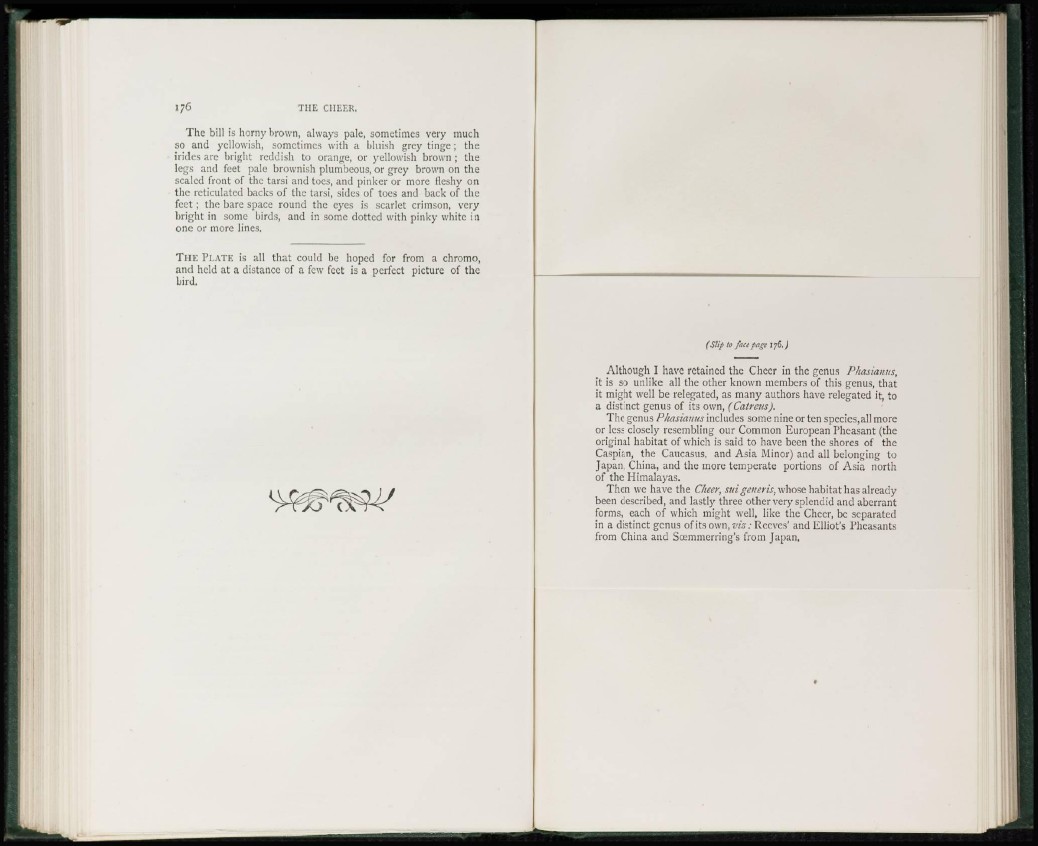
The bill is horny brown, always pale, sometimes very much
so and yellowish, sometimes with a bluish grey tinge; the
irides are bright reddish to orange, or yellowish brown ; the
legs and feet pale brownish plumbeous, or grey brown on the
scaled front of the tarsi and toes, and pinker or more fleshy on
the reticulated backs of the tarsi, sides of toes and back of the
feet ; the bare space round the eyes is scarlet crimson, very
bright in some birds, and in some dotted with pinky white in
one or more lines.
T H E PLATE is all that could he hoped for from a chromo,
and held at a distance of a few feet is a perfect picture of the
bird.
(Slip to face page 176.)
Although I have retained the Cheer in the genus Phasianus,
it is so unlike all the other known members of this genus, that
it might well be relegated, as many authors have relegated it, to
a distinct genus of its own, f Catreus).
The genus Pltasiamts includes some nine or ten species,all more
or less closely resembling our Common European Pheasant (the
original habitat of which is said to have been the shores of the
Caspian, the Caucasus, and Asia Minor) and all belonging to
Japan, China, and the more temperate portions of Asia north
of the Himalayas.
Then we have the Cheer, stti generis, whose habitat has already
been described, and lastly three other very splendid and aberrant
forms, each of which might well, like the Cheer, be separated
in a distinct genus of its own, viz: Reeves' and Elliot's Pheasants
from China and Scemnierring's from Japan.